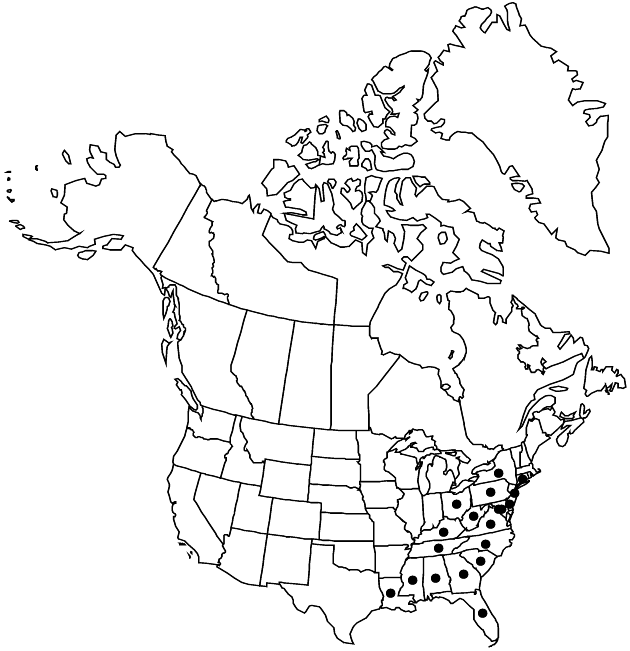Eupatorium album
Mant. Pl., 111. 1767.
Syst. Nat. ed. 12, 2: 536. 1767.
Perennials, 40–100+ cm. Stems (from short caudices or stout rhizomes) single, sparsely branched distally, pubescent throughout. Leaves usually opposite (distal sometimes alternate); sessile; blades ± 3-nerved or pinnately nerved, elliptic to oblanceolate, 30–120 × 10–40 mm (lengths mostly 3–4 times widths), bases narrowly cuneate (sometimes oblique), margins subentire, serrate, or serrulate, apices rounded to acute, faces setulose (denser on midribs and veinlets) to glabrate, usually gland-dotted. Heads in corymbiform arrays. Phyllaries 9–15 in 2–4 series, linear, 1.5–9 × 0.6–1 mm, apices acuminate to attenuate, sometimes mucronate, abaxial faces pubescent throughout, gland-dotted. Florets (4–)5; corollas 4–4.5 mm. Cypselae 2.5–3.5 mm; pappi of 40–50 bristles 3.5–4.5 mm.
Distribution

e North America.
Discussion
Varieties 3 (3 in the flora).
Eupatorium album is represented by widespread diploid populations and by polyploid, apomictic populations, segregated as varieties, that may have arisen by hybridization with other species. Molecular data suggest that var. vaseyi arose via hybridization between var. album and E. sessilifolium. They also suggest that E. album var. subvenosum arose from hybridization between E. album var. album and E. serotinum.
Selected References
None.
Lower Taxa
Key
| 1 | Leaf blades: margins coarsely serrate, apices obtuse to rounded, faces pubescent | Eupatorium album var. album |
| 1 | Leaf blades: margins subentire, serrulate, or serrate, apices acute, faces pubescent to glabrate | > 2 |
| 2 | Leaf blades 3-nerved from bases, 40–70 × 10–20 mm, margins subentire to serrulate | Eupatorium album var. subvenosum |
| 2 | Leaf blades 3-nerved distal to bases, 50–110 × 20–40 mm, margins evenly serrate | Eupatorium album var. vaseyi |